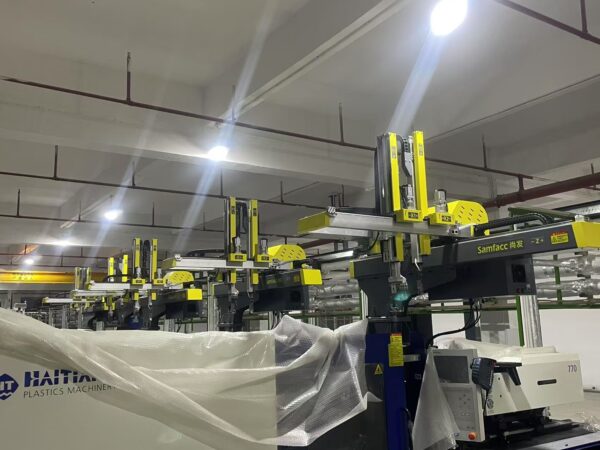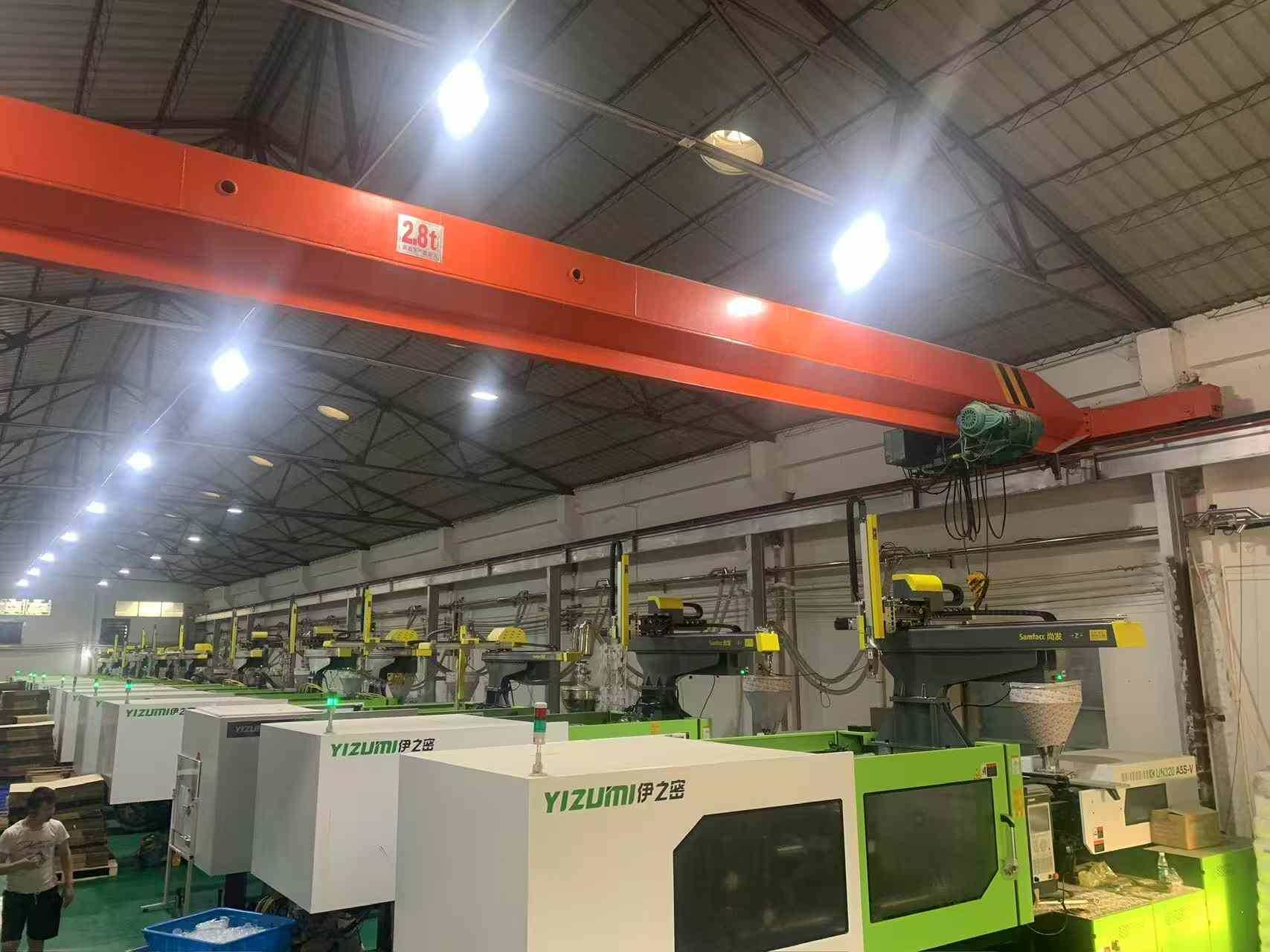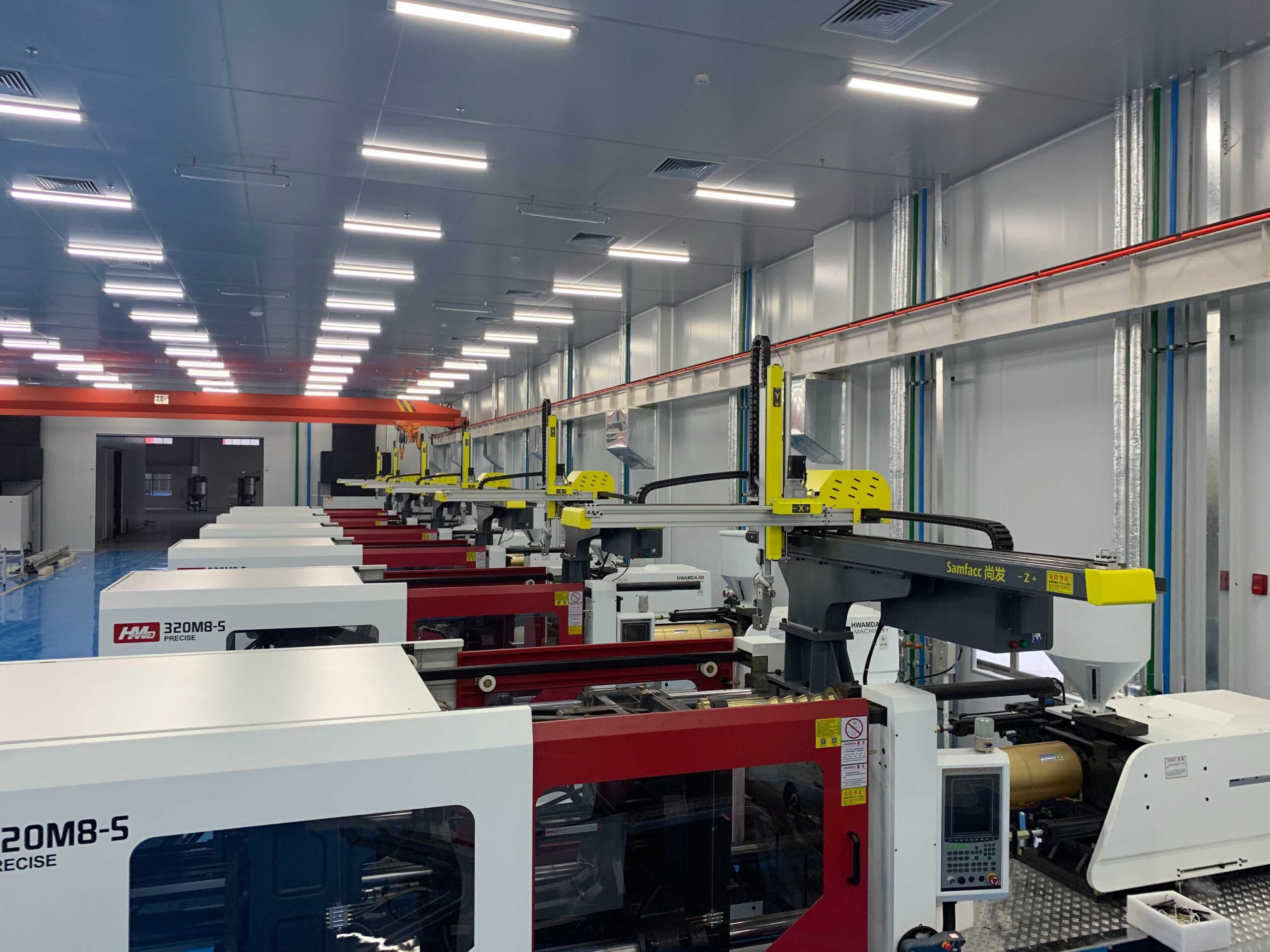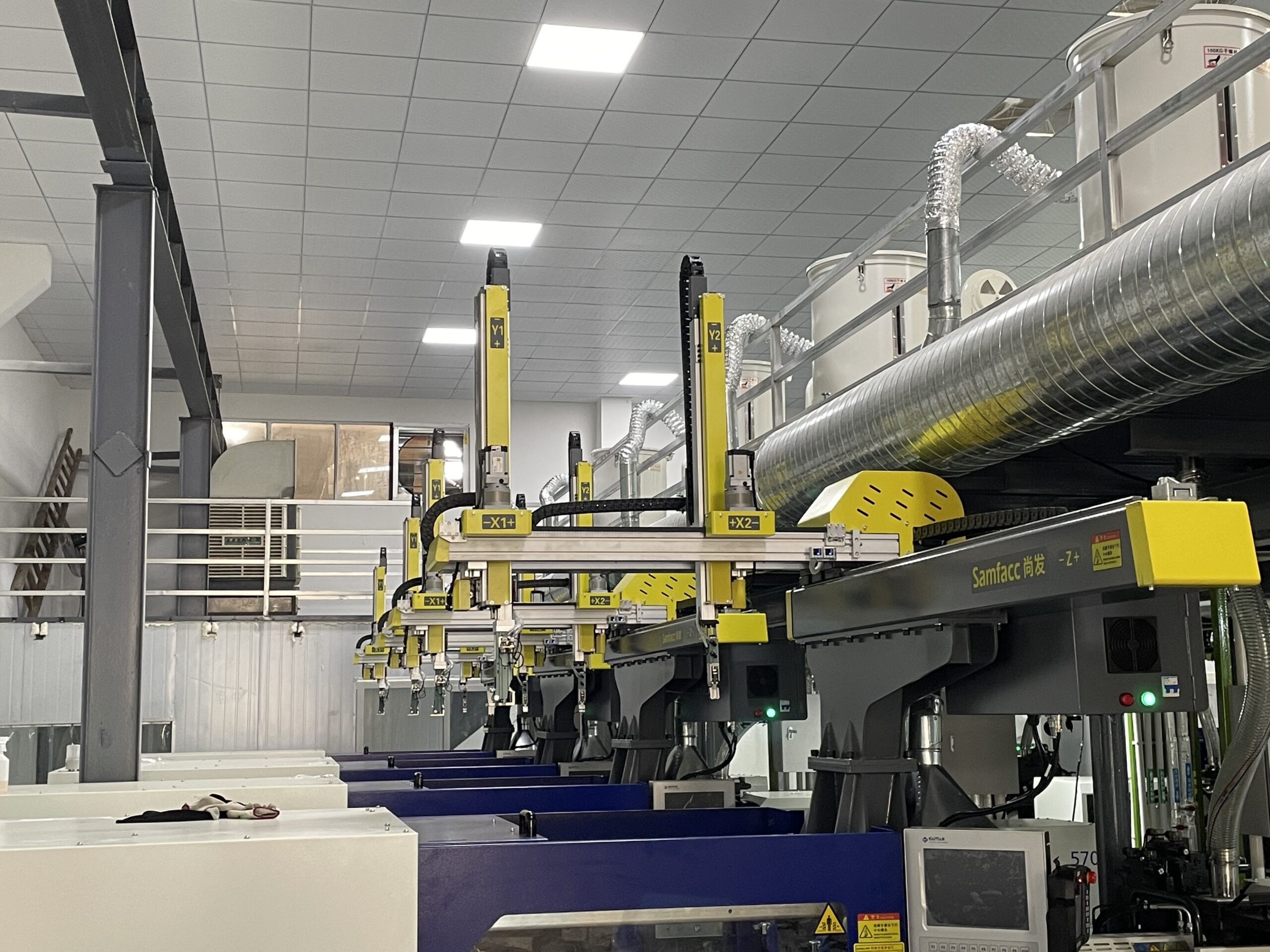Injection molding robots and future automation solutions are important ways for the injection molding industry to improve production efficiency, reduce costs, and ensure product quality.
As a kind of automation device, the SAMFACC injection molding robot can imitate the human hand and arm action and perform the task of grasping, handling, or operating tools according to the predetermined procedure. This type of robot is specially designed for injection molding machines to assist the injection molding process and realize the integration of injection molding and grasping. The SAMFACC robot is mainly composed of three parts: the execution system, the drive system, and the control system. By receiving the instructions issued by the control system, the execution system is driven to complete the pre-set actions.

The different degrees of intelligence are usually divided into two categories in the injection molding industry: basic injection molding robots and intelligent injection molding robots. The basic one mainly adopts a fixed mode program to perform simple, standardized, and repetitive actions; The intelligent one has more comprehensive functions, including arbitrary point standby, multi-point memory placement, and multi-degree of freedom movement, which can complete more complex tasks. In addition, the intelligent robot is also equipped with advanced sensors, which give the robot tactile, visual, and even thermal perception, greatly improving its intelligence level.
Looking forward to the future, the automation development trend of SAMFACC injection molding robots is mainly reflected in the following aspects:
1. multi-functional
The function of SAMFACC injection molding robots has gone beyond simple picking up parts and can now perform many tasks such as arrangement, stacking, embedding, cutting, and testing. This multi-functional development trend makes the role of robots in injection molding production lines more and more important, to meet more diverse production needs.
2. The combination
SAMFACC robots can work together in precision applications to complete complex production tasks. This combination of applications improves the production efficiency, but also enhances the flexibility and adaptability of the robot.
3. Intelligence
Injection molding robots are developing in a more intelligent direction. By integrating advanced sensors and control systems, the robot can sense changes in the external environment and adjust accordingly. For example, as mechanical wear and joints loosen, the position of the robot may be fine-tuned, and future manipulators may be self-adjusting to ensure high-precision operation. In addition, the integration of machine vision technology also allows the injection molding manipulator to have the ability to “see”, which can automatically detect the appearance defects of the product to ensure the consistency of product quality.
4. modular design
The modular design makes the customization and maintenance of SAMFACC injection molding robots more flexible and efficient. This design allows for rapid replacement of parts, reducing maintenance costs and time, while also enabling the robot to quickly adapt to different production requirements.
5. Man-machine collaboration
The development of the man-machine cooperation mode allows operators and SAMFACC robots to complete complex tasks together, improving production efficiency and operational flexibility. In this model, robotic hands are responsible for repetitive and risky work, while humans focus on more complex decision-making and creative tasks.
6. Internet of Things integration
The integration of Internet of Things (IOT) technology allows SAMFACC injection molding robots to communicate in real time with other production equipment for seamless data docking. This not only helps with predictive maintenance and reduces downtime, but also optimizes production processes through big data analytics and increases overall productivity.
In summary, the automation development trend of injection molding robots is multi-faceted, including multi-functional, combinatorial, intelligent, modular design, man-machine collaboration, and Internet of Things integration. These trends will drive the increasingly important role of robots in injection molding production lines, injecting new impetus into efficient production.





